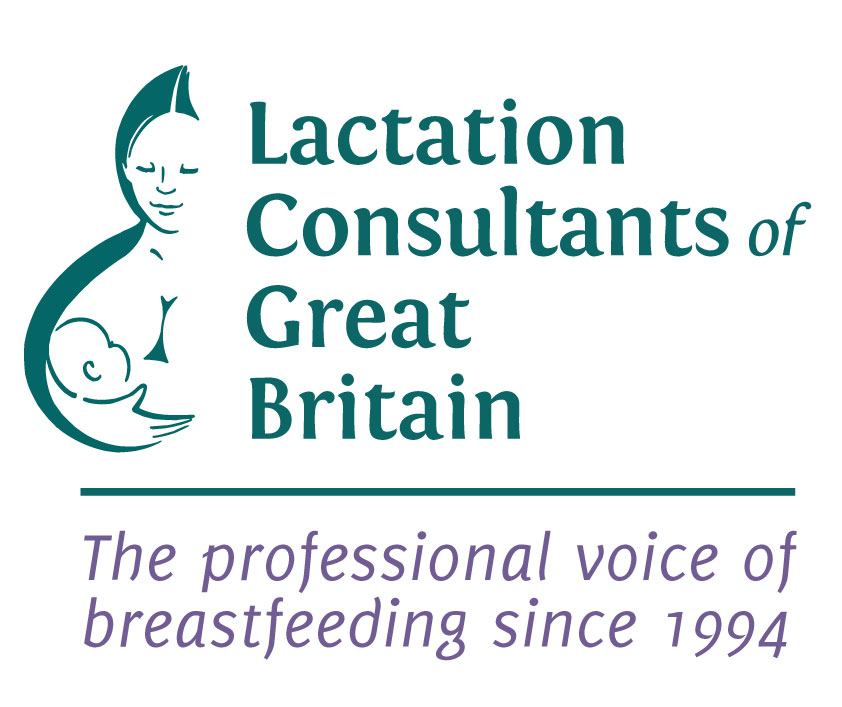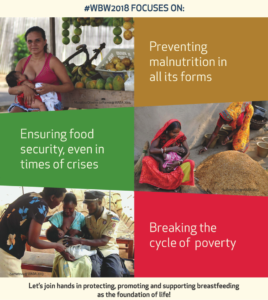
About #WBW2018
A sustainable and more equal world begins with efforts to end poverty, protect the planet and ensure prosperity for all. Malnutrition, food insecurity and poverty affect millions and stand in the way of sustainable development.
Breastfeeding is a universal solution that gives everyone a fair start in life and lays the foundation for good health and survival of children and women.
#WBW2018 #WABA #FoundationOfLife #breastfeeding #SDGs #worldbreastfeedingweek2018
The Objectives of #WBW2018 are to:
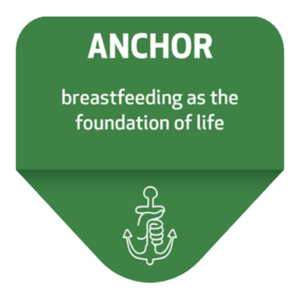
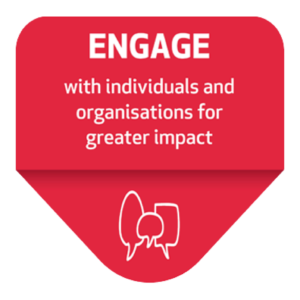
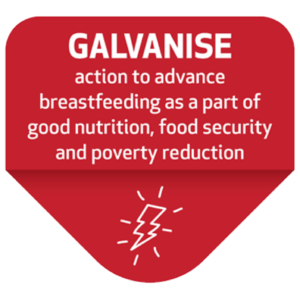
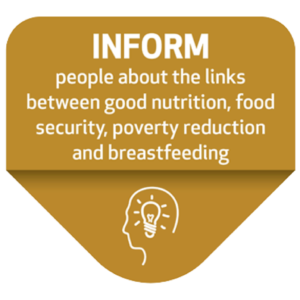
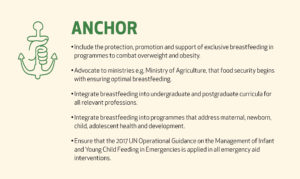
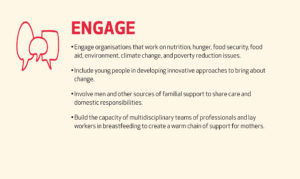
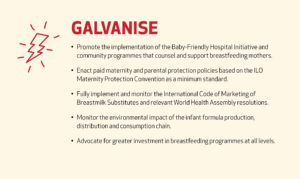
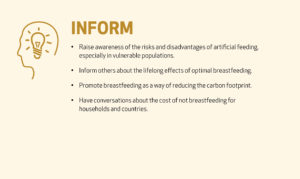
In a world filled with inequality, crises and poverty, breastfeeding is the foundation of lifelong good health for babies and mothers.
Breastfeeding prevents hunger and malnutrition in all its forms and ensures food security for babies even in times of crisis.
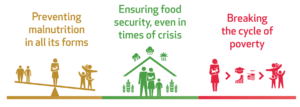
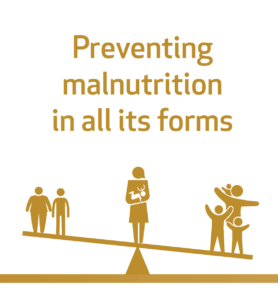
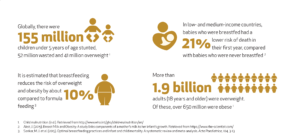
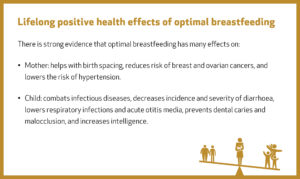
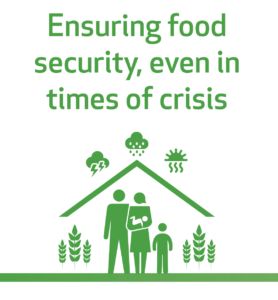
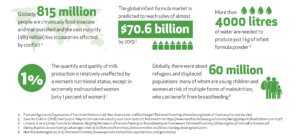
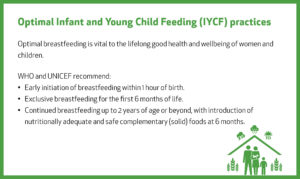
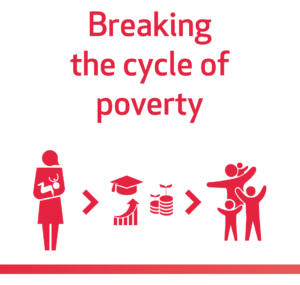
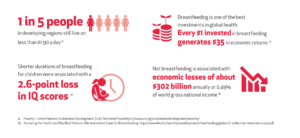
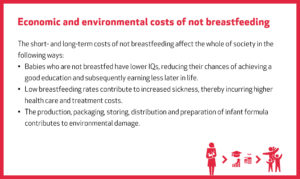
QUOTES:
“Breastfeeding is a natural ‘safety net’ against the worst effects of poverty. If the child survives the first month of life (the most dangerous period of childhood) then for the next four months or so, exclusive breastfeeding goes a long way toward canceling out the health difference between being born into poverty and being born into affluence…. It is almost as if breastfeeding takes the infant out of poverty for those first few months in order to give the child a fairer start in life and compensate for the injustice of the world into which it was born.”
James P. Grant UNICEF Executive Director 1980 – 1995
Breastmilk is the natural first food for babies, it provides all the energy and nutrients that the infant needs for the first months of life, and it continues to provide up to half or more of a child’s nutritional needs during the second half of the first year, and up to one-third during the second year of life.
Breastmilk promotes sensory and cognitive development, and protects the infant against infectious and chronic diseases. Exclusive breastfeeding reduces infant mortality due to common childhood illnesses such as diarrhoea or pneumonia, and helps for a quicker recovery during illness.
Breastfeeding contributes to the health and well-being of mothers, it helps to space children, reduces the risk of ovarian cancer and breast cancer, increases family and national resources, is a secure way of feeding and is safe for the environment.
WHO website, http://www.who.int/maternal_child_adolescent/topics/newborn/nutrition/breastfeeding/en/
And finally, for those of you who have made it this far down the page, please see additional resources on the value of breastfeeding, below:
Breastmilk, the perfect first food
Mother’s milk has been developed over 300 million years. A university project developed by students in 2007, revealed that human milk contains literally hundreds of ingredients such as human fats, sugars and proteins, vitamins and minerals, which facilitate optimal nutritional and cognitive development of the human infant. But it is so much more than a food, containing hormones and enzymes that cannot be replicated in any artificial infant formula. Constant contact with her baby enables the mother’s immune system to produce specific immnological factors against infections that the immature baby picks up in normal day to day life, that she passes back to the baby in her milk and which act as short and long-term protection against disease. Breastfeeding also acts as an important and irreplaceable means of communication between mothers and their babies, adding to the comfort and enjoyment of each in the other. For these reasons the World Health Organization recommends that babies should be exclusively breast-fed for a minimum of six months and should continue breastfeeding for up to two years or beyond. The mother who breastfeeds her baby provides him with an irreplaceable gift which will last him all his life.
Heslett C, Hedberg S and Rumble H, Did you ever wonder what’s in Breastmilk, Formula,
Breastfeeding Course for Health Care Providers, Douglas College, New Westminster, BC, Canada, 2007. http://www.tensteps.org/whats-in-breastmilk.shtml
Overweight and Obesity
Overweight/obesity increases the risk of several non-communicable diseases, including diabetes, cancer and cardiovascular disease. Breastfeeding may prevent the development of overweight/obesity, not only in early life but also in the long-term.
WHO 2013, Long-term effects of breastfeeding, a systematic review, compiled by Horta BL and Victoria CG http://www.who.int/maternal_child_adolescent/documents/breastfeeding_long_term_effects/en/
A new study from the Centre for Longitudinal Studies (CLS) at the UCL Institute of Education has found that one in five young people born in the UK at the turn of the century was obese by the age of 14, and a further 15 per cent were found to be overweight. Researchers analysed information on more than 10,000 teenagers who are taking part in the Millennium Cohort Study. They found that children who were breastfed as infants had lower odds of being overweight and obese at age 14.
Fitzsimons, E, & Pongiglione, B, Prevalence and trends in overweight and obesity in childhood and adolescence: Findings from the Millennium Cohort Study, with a focus on age 14. Centre for Longitudinal Studies Working paper 2017/16. (taken from UNICEF website at https://www.unicef.org.uk/babyfriendly/news-and-research/baby-friendly-research/infant-health-research/infant-health-research-obesity/ )
A Swedish Prospective Longitudinal study of 30,508 infants explored the potential link between breastfeeding in infancy and early childhood obesity. Any breastfeeding up to 9 months was linked to a reduced risk of obesity at four years of age.
Wallby, T, et al (2017), Relationship Between Breastfeeding and Early Childhood Obesity: Results of a Prospective Longitudinal Study from Birth to 4 Years. Breastfeeding Medicine, Vol. 12, No. 1: 48-53, doi/full/10.1089/bfm.2016.0124 taken from UNICEF website at https://www.unicef.org.uk/babyfriendly/news-and-research/baby-friendly-research/infant-health-research/infant-health-research-obesity/ )
Breastfeeding protective against over-feeding compared to bottle-feeding
Infants who are bottle-fed in early infancy are more likely to empty the bottle or cup in late infancy than those who are fed directly at the breast. Bottle-feeding, regardless of the type of milk, is distinct from feeding at the breast in its effect on infants’ self-regulation of milk intake. When feeding formula and expressed milk were considered separately, similar dose-response relationships were observed. Li R, Fein SB, and Grummer-Strawn LM. Do infant fed from bottles lack self-regulation of milk intake compared with directly breastfed infants? Pediatrics June 1, 2010;125(6):e1386-93.
http://highwire.stanford.edu/cgi/medline/pmid;20457676
Hormones in breast milk, including leptin, assist in the development of appetite control mechanisms that not only confer short-term regulation of feeding, but also protect from overweight and obesity in adolescent and adulthood. Hassiotou F, Geddes DT, Programming of appetite control during breastfeeding as a preventative strategy agains the obesity epidemic. J Hum Lact 2014;30(2):136-42. doi: 10.1177/0890334414526950. Epub 2014 Mar 18. https://www.ncbi.nlm.nih.gov/pubmed/24646683
Mother’s milk is tailor made for her individual baby. It varies according to maternal diet and genetic factors, intra-individual variation, the stage of lactation, the degree of breast fullness, how the baby feeds, and maternal-infant health status.
Kent JC, Mitoulas LR, Cregan MD, Ramsay DT, Doherty DA, Hartmann PE. Volume and frequency of breastfeedings and fat content of breast milk throughout the day. Pediatrics 2006;117:e387–95. 9 and Daly SE, Kent JC, Owens RA, Hartmann PE. Frequency and degree of milk removal and the short-term control of human milk synthesis. Exp Physiol 1996;81:861–75. 10.
Milk composition changes depending on the infant’s gender and on whether conditions are good or bad. Among 72 mothers in rural Kenya, women with sons generally gave richer milk (2.8 percent fat compared with 1.74 percent for daughters). Poor women, however, favored daughters with creamier milk (2.6 versus 2.3 percent). Fajita M, Roth E, Lo Y-J, Hurst C, Vollner J, Kendell, In poor families, mothers’ milk is richer for daughters than sons, a test of Trivers-Willard hypothesis in agropastoral settlements in Northern Kenya. American Journal of Physical Anthropology, 2012,
https://onlinelibrary.wiley.com/doi/abs/10.1002/ajpa.22092
Stem cells in breastmilk
The discovery of breast milk stem cells opens up a whole new world of possibilities for the field of lactation, as well as for cancer research and regenerative medicine. Stem cells have 2 unique capabilities: they can self-renew, i.e., create copies of themselves, and they can differentiate through progenitor steps toward different mature functional cell types under specific conditions. The greatest beneficiaries currently are breastfed infants, ingesting thousands to millions of these cells every day from mother’s milk, even late in lactation. Their discovery now reveals a component of breast milk that will never exist in artificial formulas, generating numerous implications for public policy on early infant nutrition.
Hassiotou F and Hartmann PE, At the dawn of a new discovery: the potential of breast milk stem cells. Advances in Nutrition, 2014; 5(6):770-778, https://academic.oup.com/advances/article/5/6/770/4558080
Cancer prevention
The World Cancer Research Fund has included breastfeeding as one of the four important factors in preventing cancer. Breastfeeding not only influences the health of the baby but also – and this is largely unknown – the health of the mother. Breastfeeding can prevent a certain percentage of cancers in both babies and mothers. This is one of the reasons why providing real hands-on help to mothers in order to make it possible for them to continue breastfeeding is so important. If breastfeeding could be sold as a medication or machine, then everybody would want to buy it to prevent cancer.
Dr Jack Newman, 27 June 2018 https://ibconline.ca
Protection from disease
The physical nature of antibodies, the immunoglobulins, was determined in the mid-20th century. The dominant immunoglobulin in human milk, secretory IgA, was found by Lars Å. Hanson in 1961. Human milk contains secretory IgA antibodies against all those bacteria and viruses which have been in the mother’s gut. This gives the milk the capacity to protect against those microorganisms to which the infant is exposed, because they are usually the same as those its mother has been in contact with. Hanson LÅ. Comparative immunological studies of the immune globulins of human milk and of blood serum. Int Arch Allergy Appl Immunol 1961;18:241–267, L A Hanson et al. Breastfeeding protects against infections and allergy. Breastfeeding Review; Nov l988;l9 – 22.
As a baby gets older and breastfeeds less, the immune factors in breastmilk have been shown to increase in concentration. So there is no particular age at which breastmilk is no longer valuable to the older baby or busy toddler. As the volume of the milk decreases with natural and gradual weaning, so the concentration of immune factors increases, continuing to provide the nursing toddler with real protection from disease. Goldman AS et al. Immunologic components in human milk during weaning. Acta Paediatr Scand. 1983 Jan;72(1):133-4.]
Breastfeeding and mental health
Pleasant sensory stimulation is as essential as good food for normal child growth and development. Mammals have evolved over millions of years to suckle their young, with mothers and babies in close skin-to-skin contact, facilitating the sharing of their microbiomes and mutually influencing moods and behaviours….. Breastfeeding is a powerful intimate psychosocial interaction and relationship, which has long-lasting hormone-mediated biological effects on both breastfeeder and breastfed. A breastfeeding baby is necessarily held against the mother’s body, skin to skin, with the physical intimacy of skin and eye contact strengthening attachment, and reducing energy needs and stress levels in them both. Lactation hormones such as oxytocin and prolactin have powerful and beneficial effects on both the infant’s and mother’s brains and the mother’s body, reducing stress and helping emotional bonding….Breastfeeding has also been linked to better mental health in childhood and adolescence. An association exists between breastfeeding for six months or longer and a reduction in mental health problems throughout childhood and adolescence. All of these reductions in behavioural and cognitive problems remove pressures for everyone in the family, making everyone – not just the child in question – happier and healthier. Maureen Minchin Milk matters; infant feeding & immune disorder, p 171, 2015
Breastfeeding as a life-saver in disasters and emergencies
Worldwide, a child who is not breastfed for his or her first 6 months of life is more than 14 times more likely to die compared to a baby who gets breastmilk only. Breastfeeding becomes even more critical for survival in humanitarian emergencies which can happen in any country at any time due to fire, flood, earthquakes and other man-made or natural disasters. Whether caused by conflict or natural disasters, emergencies jeopardize the health of populations, and young children are among the most vulnerable. They face risks from diarrhoeal diseases, pneumonia and undernutrition. Overcrowding, food insecurity, unsafe water, poor sanitation, displaced populations and overburdened health systems all contribute to a more dangerous situation for infants and children. In such situations breastfeeding can be a life-saver for those babies and young children whose mothers are still nursing. Failure to fully protect breastfeeding in these circumstances dramatically worsens the situation because feeding with a breast-milk substitute always carries risks, and these are heightened in emergencies since there may be no clean water with which to make up infant formula or to clean bottles and teats. Breast-milk substitutes should only be used as a last resort. The time to prepare for emergencies is before they happen, by providing all mothers, no matter where they live, with accurate information about the importance of breastfeeding to the health of their children, and helping them to initiate and maintain breastfeeding for up to two years and beyond. .
World Health Organization, 2017 http://www.who.int/mediacentre/commentaries/breastfeeding-in-emergencies/en/
Breastfeeding and Cognitive Development
Victora CG, Horta BL, de Mola CL et al, Association between breastfeeding and intelligence, educational attainment, and income at 30 years of age: a prospective birth cohort study from Brazil, Lancet 2015;3(4);e199-e205, DOI: https://doi.org/10.1016/S2214-109X(15)70002-1https://www.thelancet.com/journals/langlo/article/PIIS2214-109X(15)70002-1/abstract
Breastfeeding is associated with improved performance in intelligence tests 30 years later, and might have an important effect in real life, by increasing educational attainment and income in adulthood. A Brazilian study found that 30 year old adults who had been breastfed for 12 months or more as babies had 4 point higher IQ scores, one more year of education and higher monthly incomes than those who had been breastfed for less than 1 month. IQ was responsible for 72% of the effect on income.
The protective effects of breastfeeding against disease
Breast milk provides the ideal nutrition for newborns. It has a nearly perfect mix of vitamins, protein, and fat in a form more easily digested than any breastmilk substitute. Mother’s milk contains antibodies that help to fight off viruses and bacteria. Breastfeeding lowers the risk of a baby developing asthma or allergies.. Breastfeeding is protective against Sudden Infant Death Syndrome, lowers the risk of diabetes, obesity, and certain cancers and has been linked to higher IQ scores in later life.
Babies who are breastfed exclusively for the first 6 months, without any formula, or other foods or liquids, have fewer ear infections, respiratory illnesses, and bouts of diarrhoea and pneumonia. They also have fewer hospitalizations and trips to the doctor.
WebMD, Breastfeeding overview, https://www.webmd.com/parenting/baby/nursing-basics#1
Breastfeeding reduces the risk of childhood cancer
A new Israeli meta-analysis proves the hypothesis that breastfeeding lowers the risk of developing childhood cancers.
According to researchers at the University of Haifa, children who nurse for at least six months have a 19 percent lower possibility of developing childhood leukemia or lymphoma than infants who breastfed for a shorter period or not at all.
“The main hypothesis of the study, that breastfeeding is associated with a lower risk of childhood leukemia and lymphoma, has been fully corroborated by the study results,” Dr. Efrat Amitay of the University of Haifa’s School of Public Health, writes in the university’s newsletter.
The new study was based on earlier research by Amitay and Dr. Lital Keinan-Boker, deputy director of the Health Ministry’s Center for Disease Control. In 2014, they published a study (funded by the Israel Cancer Association) on the link between breastfeeding and cancer rates. In that study, they concluded that breastfeeding decreases children’s chances of developing cancer by 60 percent
The economic value of breastfeeding
The economic impact of low breastfeeding rates is substantial. Current recommendations are that babies should be exclusively breastfed for the first six months of life and continue breastfeeding for up to two years or beyond. Investing in services that support women to breast feed for longer is potentially cost saving on five diseases suffered by children and their mothers ; gastrointestinal infection, lower respiratory tract infection and acute otitis media in infants; necrotising enterocolitis in preterm babies and breast cancer in mothers. Data suggest that, if women exclusively breastfeeding were supported during the first 4 months of breastfeeding, this could save £11 million to the NHS due to the reduction in three childhood infectious diseases, and that by doubling the number of women currently breastfeeding for 7-18 months in their lifetime the burden of breast cancer cases could be reduced and around £31 million saved.
Pokhrel, Economic Impact of increasing breastfeeding rates in UK, Arch Dis Ch 2014 (check J articles for full citation) available at http://adc.bmj.com/content/early/2014/11/12/archdischild-2014-306701.full.pdf+html
Breastfeeding as a protective factor against childhood leukaemia and cancer
Breastfeeding is a highly accessible, low-cost public health measure. Promoting breastfeeding for 6 months or more may help lower childhood leukemia incidence, in addition to its other health benefits for children and mothers. Any breastfeeding for 6 months or longer was shown, in a meta-analysis of 18 studies, to be associated with a 19% lower risk for childhood leukemia. Amitay EL, Keinan-Boker L. Breastfeeding is protective against childhood leukemia, Breastfeeding and Childhood Leukemia Incidence: A Meta-analysis and Systematic Review. JAMA Pediatr. 2015 Jun;169(6):e151025. doi: 10.1001/jamapediatrics.2015.1025. Epub 2015 Jun 1. https://www.ncbi.nlm.nih.gov/pubmed/26030516
Early childhood nutrition may affect the subsequent risk of breast cancer in adulthood. Having been breastfed has been associated with decreased risk. There is little difference between pre- and post-menopausal women despite a much higher frequency of brestfeeding among older women. The findings of a case-control study of women ge 40-85 years in New York showed that having been breastfed was associated with decreased risk and that bottle-feeding may relate to breast cancer development in adulthood. Freudenheim JL1, Marshall JR, Graham S, Laughlin R, Vena JE, Bandera E, Muti P, Swanson M, Nemoto T. Exposure to breastmilk in infancy and the risk of breast cancer. Epidemiology. 1994 May;5(3):324-31. http://www.ncbi.nlm.nih.gov/pubmed/8038247
__________________________________________________________________
Sustainable Development Goals, https://www.globalgoals.org
Related links
